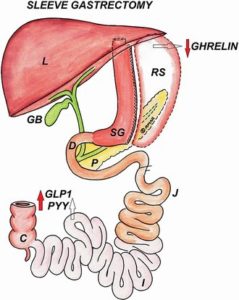The whole world is struggling the disease called Diabetes. Not only that it takes life away from us, it also is a carrier disease for even more deadly disease such as Cardiac Ailments (Heart Attacks), Renal Ailments (Kidney Failures), Ophthalmological Ailments (Glaucoma and Retinopathy), Hyper –Tension, Strokes, Diabetes foot and Vascular ailments resulting into Limb amputations.
All these years we have been fighting to manage diabetes with controlling diets, exercising, taking oral pills and getting insulin injections. Though we have been able to check the extent of disease to a certain limits but we have not been able to treat it. Neither have we been able to keep at bay the diseases associated with diabetes.
What is Diabetes?
Diabetes, is a group of metabolic diseases in which a person has high blood sugar, either because the pancreas does not produce enough insulin, or because cells do not respond to the insulin that is produced.
There are largely 2 types of Diabetes–
- Type 1 results from the body’s failure to produce insulin, while
- Type 2 results from insulin resistance, a condition in which cells fail to use insulin properly, sometimes combined with an absolute insulin deficiency. Acute & serious long-term complications include cardiovascular disease, chronic renal failure, and diabetic retinopathy (retinal damage).
Type 1 diabetes
- Type 1 diabetes is a disease in which the body can no longer produce insulin.
- Insulin is normally needed to convert sugar (also called glucose) and other food sources into energy for the body’s cells.
- It is believed that in people with type 1 diabetes, the body’s own immune system attacks and kills the beta cells in the pancreas that produce insulin. Without insulin, the body cannot control blood sugar, and people can suffer from dangerously high blood sugar levels (called hyperglycemia).
Type 2 Diabetes
- Type 2 Diabetes is a disease where the body’s cells have trouble responding to insulin – this is called insulin resistance.
- Insulin is a hormone needed to store the energy found in food into the body’s cells. In prediabetes, insulin resistance starts growing and the beta cells in the pancreas that release insulin will try to make even more insulin to make up for the body’s insensitivity.
- This can go on for a long time without any symptoms. Over time, though, the beta cells in the pancreas will fatigue and will no longer be able to produce enough insulin – this is called “beta burnout.”
COMPLICATIONS
- Macro-vascular complications occur due to accumulation of fat within the walls of the blood vessels (atherosclerosis).
- Coronary artery disease (Ischaemic heart disease), peripheral vascular disease (reduced or loss of blood supply to the legs resulting in non healing ulcers, gangrene of toes or limbs), stroke (reduced blood supply to brain causing damage), erectile dysfunction.
- Diabetic retinopathy (damage to the retina in eye and blindness), diabetic nephropathy (damage to the kidney, loss of protein in the urine, renal failure) are some examples
What are the common Symptoms?
The common symptoms of type diabetes include:
- Urinating often
- Feeling very thirsty
- Feeling very hungry even though you are eating
- Extreme fatigue
- Blurry vision
- Cuts/bruises that are slow to heal
- Weight loss even though you are eating more
Evaluations
The patient would require detailed clinical investigations including Body Mass Index, Polysomnography, Electroencephalography, Electrocardiography, Pulse oximetry and Blood Monitoring before proceeding with the treatment.
Treatment
Treatment is based on provisional diagnosis. If the patient is Type 2 Diabetes, the patient may need Diabetic surgery in form of Sleeve Gastrectomy with Ileal Interposition.
It is a most effective metabolicsurgery. In this type of surgery, up to 80 percent of left side of the stomach is removed and the first part of the duodenum is disconnected using linear cutter stapler. A significant segment of the ileum is isolated by dividing the ileum proximal to the Junction of the small and large bowels. Bowel continuity is restored by joining the remaining ends of the ileum and all the mesenteric gaps are closed. In this operation Ghrelin hormone – the hormone responsible for hunger production is reduced, as fundus of the stomach is removed.
Benefits:
- More than 80% of people show no signs of diabetes after surgery.
- People usually lose 50% of their extra weight.







